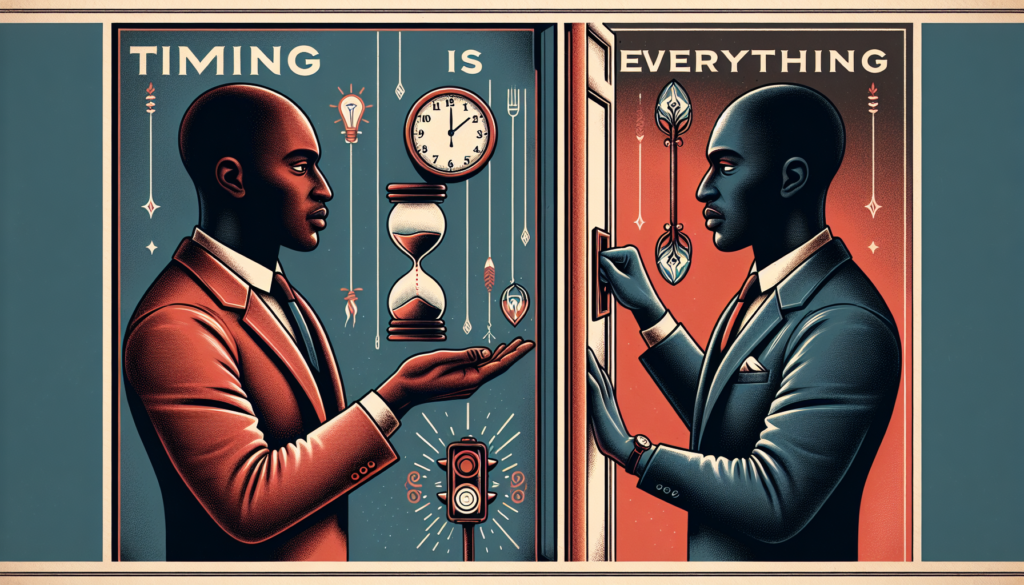Timing Is Everything: When to Follow Up and When to Hold Back in Professional Communications (2024 Guide)
Meta: Master the art of perfect timing in professional communications. Learn when to follow up and when to hold back to maximize your success in business relationships.
Did you know that 24% of sales emails are opened within the first hour of sending, but timing your follow-up wrong can reduce your response rate by up to 45%? As someone who’s spent years perfecting the art of professional communication, I can tell you that timing isn’t just important – it’s everything! Whether you’re following up on a job application, client proposal, or business partnership, knowing when to take action and when to exercise patience can make or break your success.

Understanding the Psychology of Timing in Professional Communications
When it comes to professional communications, timing is everything. But have you ever wondered why? Let’s dive into the science behind response rates and timing.
Studies show that people are more likely to respond to messages received during working hours, particularly in the morning. This makes sense, right? We’re fresh, caffeinated, and ready to tackle our inbox.
But it’s not just about the time of day. Cultural and industry-specific timing considerations play a huge role too. For instance, in some cultures, it’s perfectly acceptable to send work-related messages late into the evening, while in others, it’s a big no-no.
And let’s not forget about time zones! With remote work becoming more common, we’re often communicating across different time zones. It’s crucial to be mindful of this when scheduling meetings or expecting quick responses.
Lastly, there’s the psychology of urgency vs. patience. We all want quick responses, but sometimes, giving people time to process information can lead to better outcomes. It’s a delicate balance, isn’t it?
Identifying the Perfect Moment to Follow Up
So, how do you know when it’s the right time to follow up? There are a few key indicators to watch out for.
First, consider industry-standard waiting periods. In some fields, it’s normal to wait a week before following up, while in others, a day or two is more appropriate.
Then, there’s the art of reading digital body language. Has the person viewed your email or LinkedIn message? Have they been active on social media? These can be signs that it’s time to reach out.
Fortunately, there are tools available to help track communication timing. Many email clients now offer read receipts and scheduling features, making it easier to time your follow-ups perfectly.
Red Flags: When to Hold Back
Just as important as knowing when to follow up is recognizing when to hold back. There are certain signs that indicate you should wait.
For example, if you’ve sent multiple messages without any response, it might be time to take a step back. This ‘radio silence’ could mean the person is busy, uninterested, or simply needs more time.
It’s also crucial to avoid common timing mistakes. Sending follow-ups too quickly or too frequently can come across as pushy or desperate. Remember, over-communication can be just as damaging as under-communication.
Creating an Effective Follow-up Strategy
Now that we understand the importance of timing, let’s talk about creating an effective follow-up strategy.
Having templates for different scenarios can be a real time-saver. Whether you’re following up on a job application, a sales pitch, or a networking opportunity, having a pre-prepared message can help you strike the right tone.
When it comes to timing intervals for multiple follow-ups, a good rule of thumb is to increase the time between each attempt. For example, you might follow up after 3 days, then a week, then two weeks.
Channel selection is another important consideration. Email might be appropriate for formal communications, while a quick message on LinkedIn could work better for networking follow-ups.
The key is to maintain professionalism while being persistent. It’s a fine line to walk, but with practice, you’ll find the right balance.
Best Practices for Different Communication Channels
Let’s wrap up by looking at best practices for different communication channels.
For email follow-ups, try to send your message in the morning, preferably on a Tuesday or Thursday. These days tend to have higher open and response rates.
When it comes to social media engagement, timing can vary depending on the platform. For LinkedIn, weekdays during business hours are best. For Twitter, engagement tends to be higher in the evenings.
Phone calls require a bit more consideration. It’s generally best to avoid calling first thing in the morning or right before lunch. Mid-morning or mid-afternoon tend to be good times.
Finally, for in-person meetings, be mindful of the other person’s schedule. Avoid scheduling meetings first thing Monday morning or late on Friday afternoon, unless absolutely necessary.
Remember, these are general guidelines. The best timing will always depend on your specific situation and the person you’re communicating with. Don’t be afraid to experiment and find what works best for you!

Conclusion
Wrap up by emphasizing the balance between proactive follow-up and strategic patience. Include actionable tips for readers to implement immediately and encourage them to develop their own timing intuition based on these guidelines.




